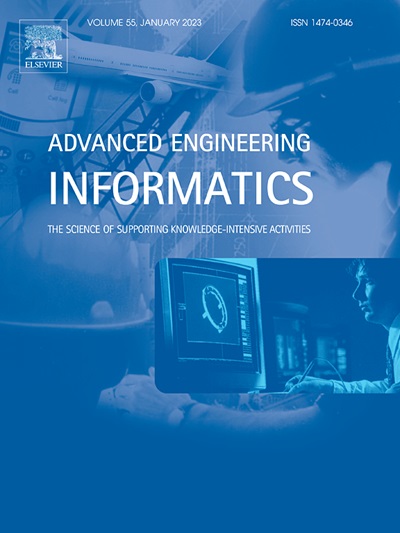Physics-data driven multi-objective optimization for parallel control of TBM attitude
IF 8
1区 工程技术
Q1 COMPUTER SCIENCE, ARTIFICIAL INTELLIGENCE
引用次数: 0
Abstract
To more accurately control the attitude of the tunnel boring machine (TBM), this study proposes a physics-data driven multi-objective optimization (MOO) method. The proposed method combines the dynamics theory of the shield propulsion hydraulic system with deep neural networks (DNN) to generate a physics-informed deep learning (PIDL) model that is capable of accurately estimating oil cylinder strokes. Furthermore, a simulation model integrating the PIDL and the non-dominated sorting genetic algorithm III (NSGA-III) is established to perform optimization of shield attitude deviation. A field test of synchronous excavation and segment assembly TBM (S-TBM) is used as a case study to confirm the proposed method’s reliability. The results indicate that: (1) The developed PIDL model accurately predicts oil cylinder strokes under different geological conditions with R2 values of 0.99. (2) For all strata, the proposed shield attitude control framework achieves an average overall improvement rate of 19.57% while considering regulation time, overshoot, and accumulative error simultaneously. (3) The proposed PIDL stands out with an advantage of 0.40 higher R2 mean value than that of existing methods. (4) Compared to other popular MOO algorithms, the NSGA-III employed in this study generates Pareto fronts with the highest hypervolume mean value of 7.25, demonstrating better convergence and diversity. The novelty of this study lies in proposing an optimization framework with the integration of PIDL, NSGA-III, and virtual model to realize effective control of shield attitude.
求助全文
约1分钟内获得全文
求助全文
来源期刊

Advanced Engineering Informatics
工程技术-工程:综合
CiteScore
12.40
自引率
18.20%
发文量
292
审稿时长
45 days
期刊介绍:
Advanced Engineering Informatics is an international Journal that solicits research papers with an emphasis on 'knowledge' and 'engineering applications'. The Journal seeks original papers that report progress in applying methods of engineering informatics. These papers should have engineering relevance and help provide a scientific base for more reliable, spontaneous, and creative engineering decision-making. Additionally, papers should demonstrate the science of supporting knowledge-intensive engineering tasks and validate the generality, power, and scalability of new methods through rigorous evaluation, preferably both qualitatively and quantitatively. Abstracting and indexing for Advanced Engineering Informatics include Science Citation Index Expanded, Scopus and INSPEC.
 求助内容:
求助内容: 应助结果提醒方式:
应助结果提醒方式:


